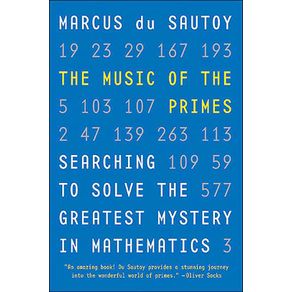The quest to bring advanced math to the masses continues with this engaging but quixotic treatise. The mystery in question is the Riemann Hypothesis, named for the hypochondriac German mathematician Bernard Reimann (1826-66), which ties together imaginary numbers, sine waves and prime numbers in a way that the world's greatest mathematicians have spent 144 years trying to prove. Oxford mathematician and BBC commentator du Sautoy does his best to explain the problem, but stumbles over the fact that the Riemann Hypothesis and its corollaries are just too hard for non-tenured readers to understand. He falls back on the staples of math popularizations by shifting the discussion to easier math concepts, offering thumbnail sketches of other mathematicians and their discoveries, and occasionally overdramatizing the sedentary lives of academics (one is said to be a "benign Robespierre" whose non-commutative geometry "has instilled terror" in his colleagues). But du Sautoy makes the most of these genre conventions. He is a fluent expositor of more tractable mathematics, and his portraits of math notables-like the slipper-shod, self-taught Indian Srinivasa Ramanujan, a mathematical Mozart who languished in chilly Cambridge-are quite vivid.His discussion of the Riemann Hypothesis itself, though, can lapse into metaphors ("By combining all these waves, Riemann had an orchestra that played the music of the primes") that are long on sublime atmospherics but short on meaningful explanation. The consequences of the hypothesis-a possible linkage to "quantum chaos," implications for internet data encryption-may seem less than earth-shaking to the lay reader, but for mathematicians, the Riemann Hypothesis may be the "deepest and most fundamental problem" going. 40 illustrations, charts and photos.



